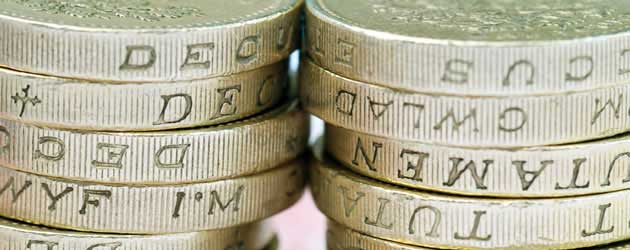
The Pound to US Dollar exchange rate (GBP/USD) struck a monthly high of 1.6240 late last night, as investors continued to push Sterling higher against the ‘Greenback’.
The US Dollar weakened on Friday as Dennis Lockhart, the President of the Atlanta branch of the Federal Reserve, said that the US Central Bank aims to support the US economy with loose monetary policy for a number of years.
“We are going to remain very accommodative for quite some time, in all likelihood a number of years”.
Lockhart stated that asset purchases would not be reduced until the economy is sufficiently stabilised to support itself, but admitted that the FOMC is likely to discuss the possibility of tapering the $85 billion a month QE3 scheme during the next few months. Lockhart’s comments were generally viewed to carry more dovish connotations than hawkish undertones and this allowed the Pound to appreciate against the ‘Buck’.
A statement from Bank of England Chief Economist Spencer Dale, in which the BoE man denied that Britain is heading for another housing crisis, also supported Sterling.
“We know that the housing market can quickly go from normal levels to overheating”, but the UK is “not there now”.
The Pound is heading towards technical resistance at 1.6260 against the US Dollar; GBP/USD has not successfully breached this level since January 1st. If Sterling’s positive momentum continues over the next few days and weeks then it is entirely possible that the cable pairing could strike a fresh 11-month high above significant psychological resistance at 1.6300.
Large currency movements are unlikely this week because the majority of trading centres will be closed on Thursday and Friday in the United States for the Thanksgiving holiday period.
On the economic docket we have US Consumer Confidence on Tuesday, which is likely to show an improvement from 71.2 to 72.4 in November; the US Dollar is unlikely to budge much in response to the figure.
On Wednesday UK GDP is expected to be confirmed at 0.8% for the third quarter. This is unlikely to yield any significant market movement, but if Q3 growth is revised higher then this could prove the catalyst needed to send GBP/USD above 1.6300. An estimated -1.9% fall in US Durable Goods Orders during October, also released on Wednesday, is likely to exacerbate the ‘Greenback’s’ woes.
The main threat to Sterling strength against the US Dollar is talk of the taper. If any concrete details of a reduction of stimulus in December are released then GBP/USD rallies are liable to collapse.

Comments are closed.